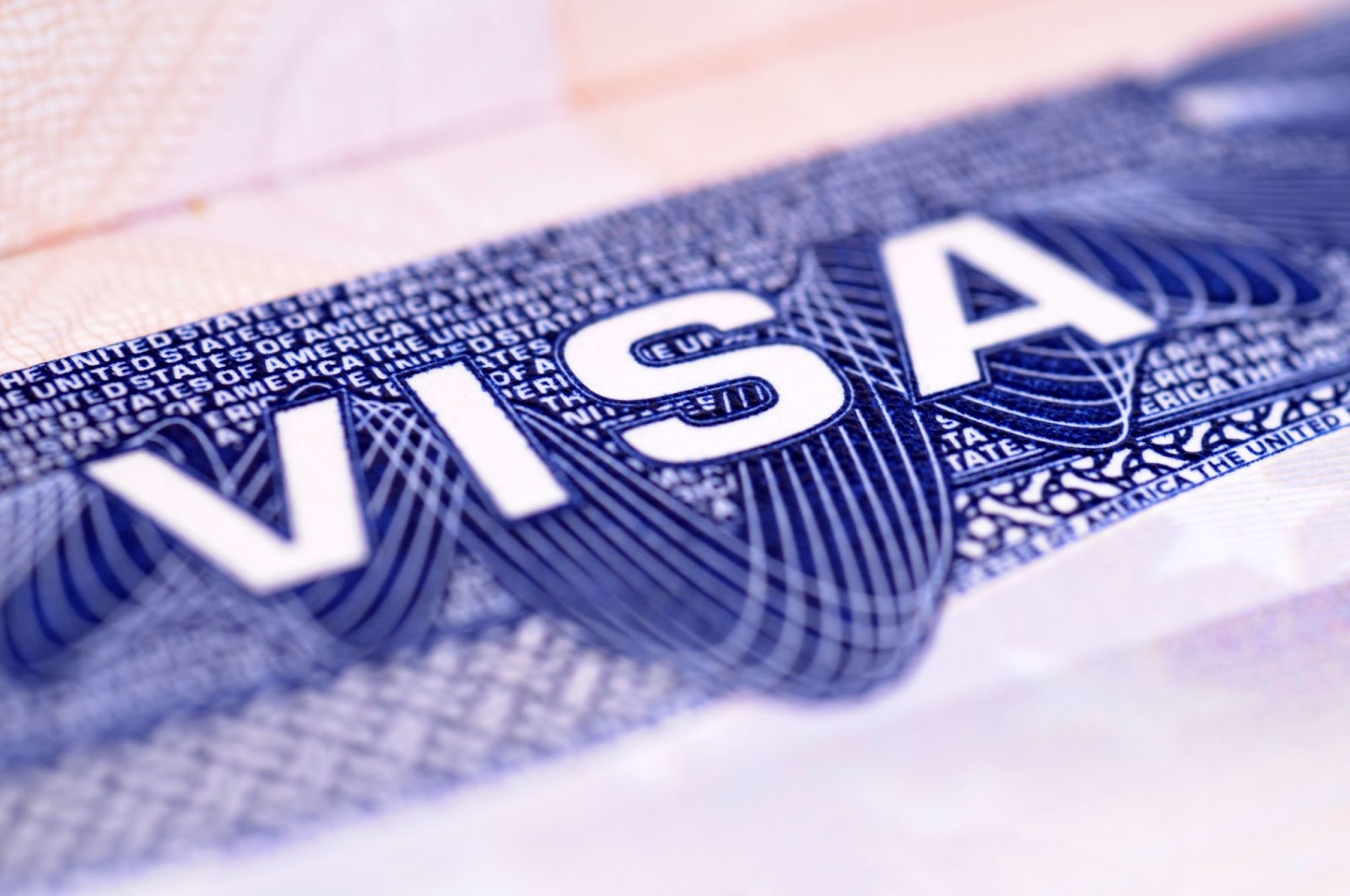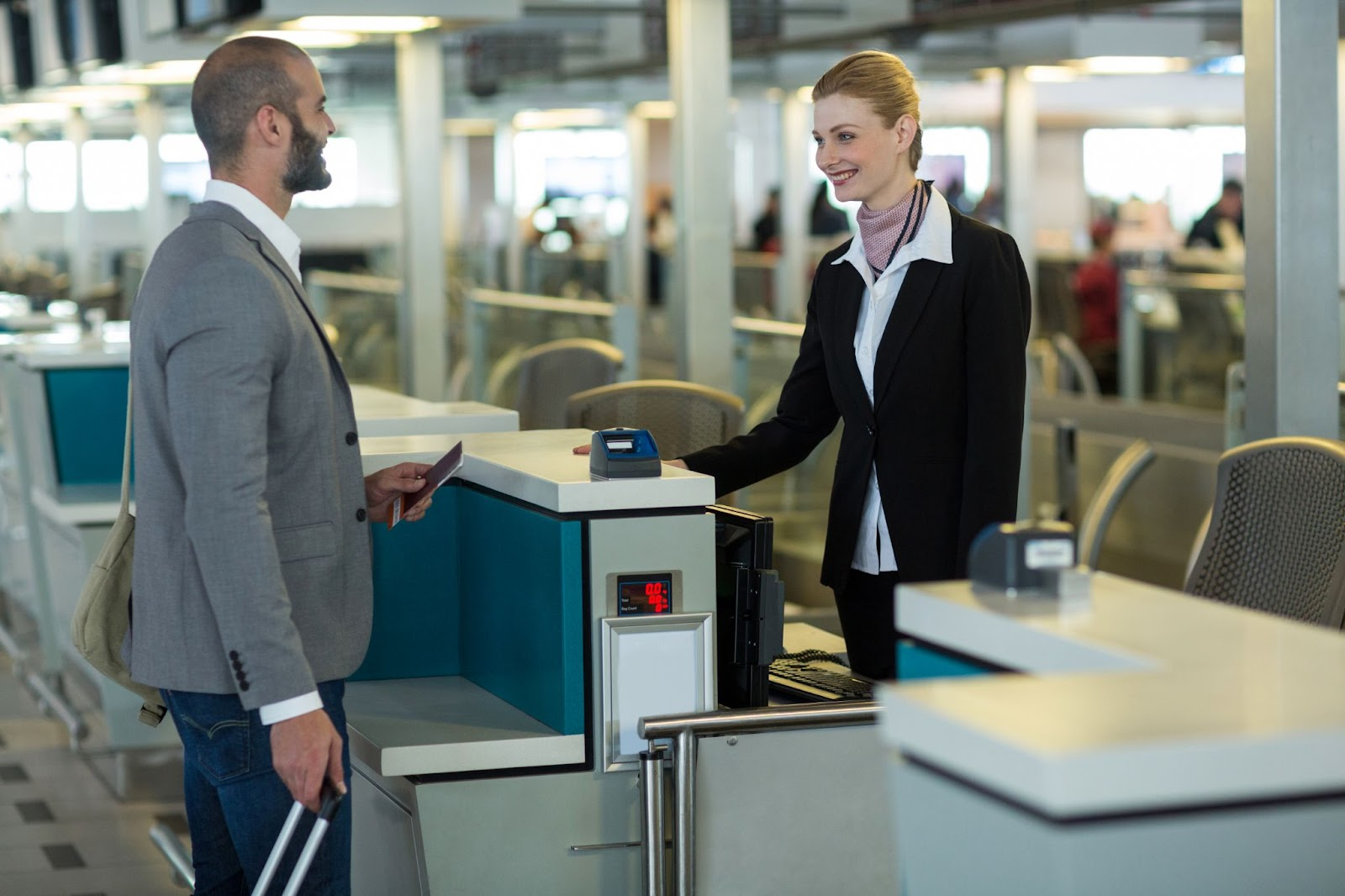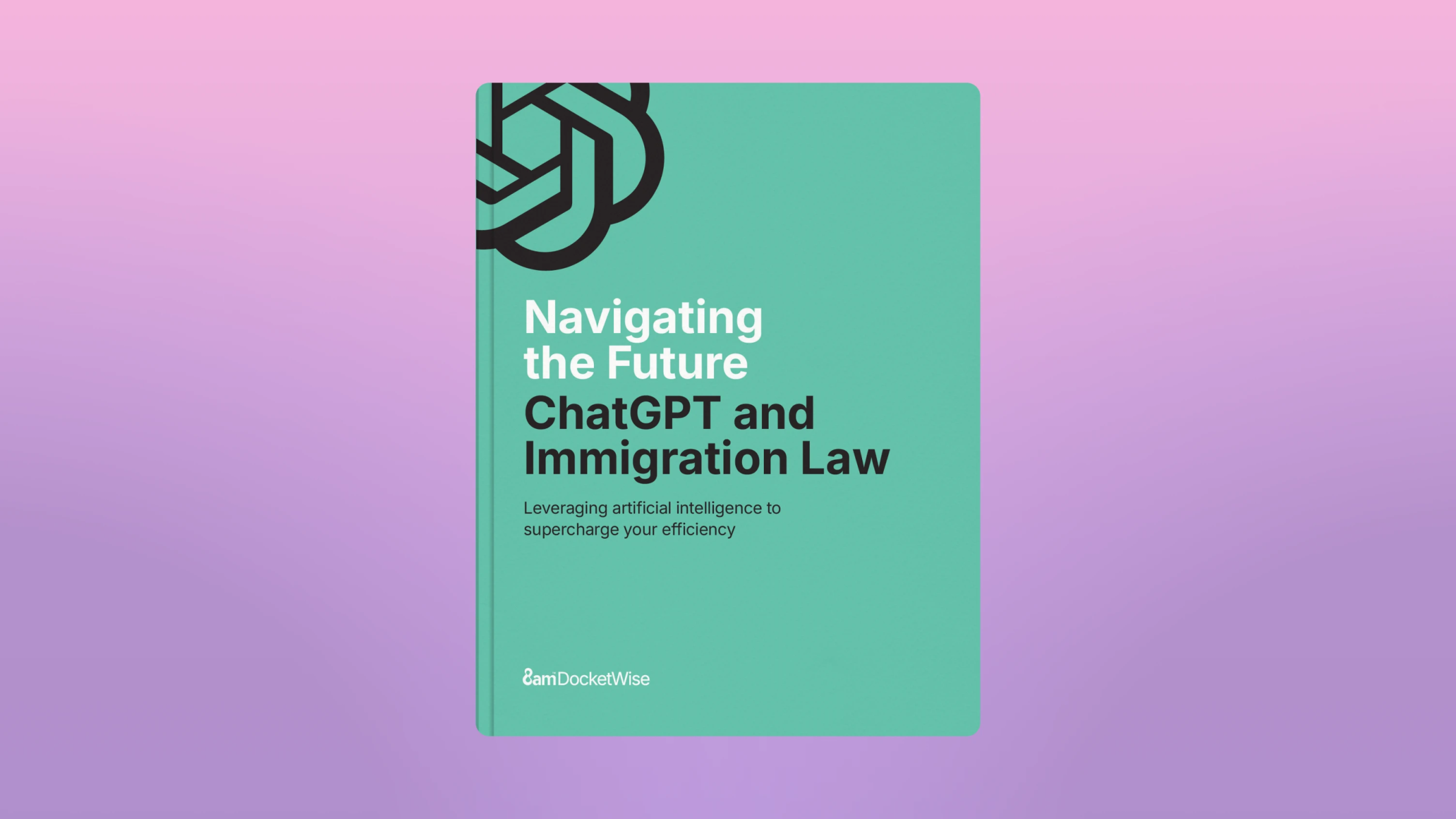Immigration has been a part of human history for thousands of years, with people moving from one place to another in search of a better life or escaping political or social turmoil. However, immigrating to a new country has not always been straightforward. For many years, the immigration process involved lengthy paperwork, manual identification checks, and long waiting times at border crossings.
However, with the advancement of modern technology, the immigration process has become more streamlined, efficient, and accessible for foreign nationals than ever before. This comprehensive blog post will explore how modern-day immigration technology has changed and simplified the immigration experience for those seeking to move to the United States.

Electronic Visa Applications
Electronic visa immigration applications have revolutionized the United States' immigration scene, making obtaining an immigrant visa faster, more convenient, and more accessible. In the past, visa applications involved a lengthy process of filling out paperwork and visiting embassies or consulates to apply in person.
However, the process has become much simpler and more efficient with the introduction of electronic visa applications. The method of electronic visa application involves the following:
Completing an online application form;
Submitting the required documents electronically;
Paying the visa fee online.
This process can be completed from the comfort of one's home or office, eliminating applicants needing to visit an embassy or consulate in person. One of the significant benefits of electronic visa applications is the reduced processing times. Previously, visa applications could take months or even years to process, causing substantial delays in prospective immigrants' lives. However, with electronic visa applications, applicants can receive a response within a few weeks. This faster processing time has made it easier for applicants to plan their travel and has made the immigration experience less stressful.
Electronic visa applications have also made the immigration experience more accessible. In the past, visa applicants had to visit an embassy or consulate in person, which could be difficult or impossible for those who lived far away or had mobility issues. However, with electronic visa applications, applicants can complete the process from anywhere with an internet connection, making it easier for people worldwide to apply for immigration visas or green cards.
Furthermore, electronic visa applications have improved the accuracy and security of the immigration process. Electronic forms and documents reduce the risk of errors and fraud, and the electronic payment system ensures that visa fees are paid securely and efficiently. Additionally, electronic visa applications allow for biometric identification, which has become a crucial part of the immigration process in the United States. Biometric data, such as facial recognition and fingerprint scanning, helps to prevent identity fraud and other security concerns.
Modern immigration technology, like electronic visa applications, has significantly changed and simplified the immigration experience in the United States and made it easier for people to travel and start a new life.

Biometric Identification And Electronic Border Control
In recent years, biometric identification and electronic border control systems have significantly impacted the immigration process in the United States, considerably improving efficiency and security. These technological advancements have transformed how immigration officials verify immigrant identities and legal status, reducing processing times and increasing accuracy.
Biometric identification systems, such as fingerprinting and facial recognition, have made it easier for immigration officials to verify immigrants' identities and confirm their legal status. In addition, these systems have enabled officials to quickly and accurately match individuals to their immigration documents, reducing the likelihood of fraud and identity theft. Biometric identification has also helped to speed up the immigration process, as legal immigrants no longer need to present physical documents for inspection.
Electronic border control systems, such as the United States Visitor and Immigrant Status Indicator Technology (US-VISIT) program, have also significantly improved the immigration experience. This system captures biometric data, including fingerprints and photographs, from non-US citizens arriving at US ports of entry. This information is then used to track the entry and exit of immigrants and detect and prevent fraudulent activity.

In that context, both biometric identification and electronic border control systems have revolutionized the immigration process, making it more straightforward and more secure. These technological advancements have helped to reduce wait times, increase efficiency, and improve accuracy in verifying immigrants' identities and legal status. While challenges and issues remain to address, such as privacy and data protection concerns, these immigration systems have proven essential tools in modernizing and streamlining the immigration process.
A Wealth Of Immigration-Related Information And Resources Can Be Found On The Internet
The internet has revolutionized how immigrants can access information and resources to help them navigate the complex process of immigrating to the United States. With the click of a button, immigrants can now access a wealth of information about the immigration process, including the various types of visas available, the requirements for each key, and the steps required to apply.
Online forums and social media platforms have become essential resources for immigrants seeking information and advice. These platforms allow immigrants to connect with others who have gone through the immigration process and share their experiences and insights. Immigrants can also join online communities dedicated to supporting newcomers, where they can access resources, ask questions, and receive guidance from experts in the field.

In addition to online communities, numerous websites provide detailed information on the immigration process. The U.S. Citizenship and Immigration Services (USCIS) website, for example, offers comprehensive information on the various types of visas available, the eligibility requirements for each visa, and the application process. The site also includes a tool that allows immigrants to track the status of their applications online.
Another valuable resource for immigrants is online legal services. Many online platforms now offer legal advice and support to immigrants, including assistance in filling out visa applications, reviewing legal documents, and providing representation in immigration court. These services are often more affordable than traditional legal services, making them more accessible to immigrants who may not have the financial resources to hire a lawyer.
The internet has also made it easier for immigrants to access language support services. For example, many online platforms offer translation and interpretation services, allowing immigrants to communicate with federal government agencies and access information in their native language. This is particularly important for immigrants who may not speak English fluently and struggle to understand the complex legal language used in the immigration process.
Virtual Consultations With Immigration Lawyers
In recent years, the possibility of virtual consultations with immigration lawyers has transformed the immigration process and made legal assistance more accessible and affordable for immigrants in the United States. In addition, with the widespread adoption of digital immigration technology, immigration lawyers can now communicate with clients through video conferencing, email, or messaging applications, making it easier for clients to receive legal advice regardless of their location or schedule.
One of the primary benefits of virtual consultations is that they provide greater access to legal assistance for immigrants who may live in remote or rural areas. In the past, these individuals may have had to travel long distances to meet with an immigration lawyer, which could be costly and time-consuming. With virtual consultations, clients can connect with their immigration attorneys from anywhere with an internet connection, reducing the burden of travel time and expenses.

Virtual consultations also make legal assistance more affordable for immigrants, particularly those who may not have the financial means to hire an immigration lawyer for in-person consultations. In addition, because virtual consultations require less overhead and administrative costs, many immigration lawyers can offer their services at a reduced rate, making legal assistance more accessible to low-income and underserved immigrant communities.
By using digital technology for immigration lawyers, such as secure online portals, lawyers can securely share documents and information with clients, eliminating the need for in-person document exchange. This can speed up the processing of applications and reduce the potential for errors or government delays caused by lost or misplaced paperwork. Furthermore, virtual consultations can improve the efficiency and effectiveness of the immigration process.
The Emergence Of Immigration Case Management Solutions
Last, immigration case management software is a powerful tool that has revolutionized how lawyers and prospective immigrants approach the complex and often daunting immigration legal process.
This software provides a streamlined, centralized system for greater efficiency, accuracy, and organization in managing immigration cases. Here are some ways that immigration case management technology solutions ease and streamline the immigration process for both prospective immigrants and immigration experts:
Centralized information management. Immigration case management software centralizes all case information, documents, and communication in one place. This allows lawyers to easily access all necessary information in real-time, streamlining the process of creating and updating cases. Prospective immigrants can also log in and access their case information, keeping them informed and up-to-date on the status of their case. This centralization of information significantly reduces the chance of errors or misunderstandings and ensures that all stakeholders are on the same page.
Customizable workflows. Immigration case management software can be customized to fit the specific needs of a law firm or organization. Law firms can work more efficiently, handle more cases, and provide better client services. Customizable workflows help lawyers automate processes, saving time and reducing human error risk.
Automated case status updates. With immigration case management software, lawyers can automate case status updates. This feature provides clients with real-time updates on the status of their cases, reducing the need for phone calls and emails to stay informed. Automated case status updates also save time for lawyers, allowing them to focus on more complex tasks.
Secure document sharing. Immigration case management software offers secure document sharing, making it easy for lawyers to upload and share documents with their clients. This feature ensures that sensitive information remains confidential and that only authorized parties can access case documents. Additionally, prospective immigrants can upload their records, eliminating the need for in-person document exchange.
Efficient collaboration. Immigration case management software streamlines collaboration between lawyers and their teams. Multiple users can work on a case simultaneously, and tasks can be assigned and tracked. This feature ensures that everyone is working together towards the same goal, reducing the chance of miscommunication and errors.
Professional immigration case management software like Docketwise eases and streamlines the immigration process for both prospective immigrants and lawyers. With centralized information management, customizable workflows, automated case status updates, secure document sharing, and efficient collaboration, lawyers can provide better client services, and prospective immigrants can navigate the immigration process more efficiently.
As immigration law evolves and becomes more complex, immigration case management software will become an increasingly essential tool for law firms and organizations working with immigrants. If you want to take your immigration law office to the next level and see how our all-in-one immigration solution can help you stay on top of your cases, feel free to schedule a free demo of our solution and see firsthand why thousands of your peers have already switched to Docketwise.

Final Words
In conclusion, if you were wondering how to make immigration more accessible for all parties concerned—now you know that modern immigration technology has significantly changed and simplified the immigration experience, making it more accessible, affordable, and efficient for prospective immigrants and lawyers. In addition, the rise of these sophisticated tools has transformed how lawyers and clients approach the immigration process, allowing for greater flexibility, centralization, and collaboration.
In the years to come, we can expect immigration technology to continue to shape and transform the immigration experience. By staying up-to-date with the latest technological advancements, prospective immigrants and legal service providers can ensure that the immigration process becomes more accessible, efficient, and simplified for all who seek a better life in the United States.
Transform Your Practice with ChatGPT
Discover how AI, particularly ChatGPT, can revolutionize your practice, from automating tasks to mastering effective prompting.
Download Now
About the author

Michael MielloContent Writer
